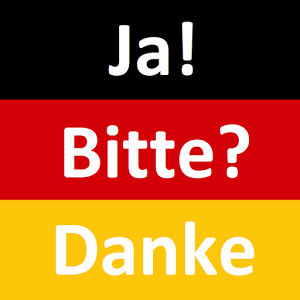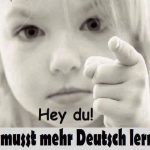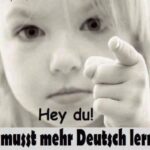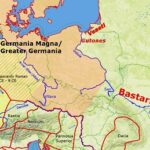
The German language, known for its precision and richness, is not a monolith but a mosaic of dialects that paint a colorful linguistic landscape across German-speaking regions. These dialects, deeply rooted in history and culture, offer a fascinating window into the diversity of the German-speaking world. In this comprehensive guide, we will explore the various German language dialects, their unique features, geographical distribution, and their significance in the broader context of German culture and society.
The German Dialect Landscape
The German language is divided into several major dialect groups, each with its distinct characteristics. The primary groups are Low German (Niederdeutsch), Central German (Mitteldeutsch), and Upper German (Oberdeutsch). These groups are further subdivided into various regional dialects.
Low German (Niederdeutsch)
Low German, or Niederdeutsch, is a captivating linguistic phenomenon that holds a special place in the spectrum of Germanic languages. This article delves into the essence of Low German, exploring its historical roots, dialectal variations, and cultural significance, offering readers an intriguing glimpse into this lesser-known yet fascinating language.
Low German, historically spoken in the lowlands of northern Germany and parts of the Netherlands, is distinguished from High German by its unique phonetic and grammatical features. Originating in the early medieval period, it evolved from Old Saxon and has since undergone significant transformations. This language played a vital role in the Hanseatic League, a powerful medieval commercial and defensive confederation, which contributed to its spread across the Baltic and North Sea regions.
Niederdeutsch is characterized by a rich tapestry of dialects, each with its own distinct flavor. Key dialects include West Low German, spoken in the Netherlands and northwestern Germany, and East Low German, primarily found in northeastern Germany and parts of Poland. These dialects exhibit considerable variation in vocabulary, pronunciation, and syntax, reflecting the diverse cultural and historical influences on the regions where they are spoken.
In recent years, there has been a renewed interest in preserving and revitalizing Low German. Educational initiatives, literary projects, and media in Niederdeutsch have gained momentum, aiming to keep this linguistic heritage alive. However, the language faces challenges such as declining numbers of native speakers and limited official recognition, which hinder its wider use and preservation.
Low German (Niederdeutsch) is more than a dialect; it is a linguistic bridge to the past, a mirror reflecting centuries of cultural exchanges and transformations. Its study offers invaluable insights into the evolution of Germanic languages and serves as a reminder of the richness and diversity of human language. As we acknowledge and appreciate the unique qualities of Niederdeutsch, we contribute to the tapestry of global cultural heritage, ensuring that this linguistic treasure continues to thrive for generations to come.
Central German (Mitteldeutsch)
Central German dialects, collectively known as Mitteldeutsch, form a unique and vibrant part of Germany’s linguistic landscape. These dialects, spoken primarily in the central regions of Germany, boast a rich history and play a significant role in the cultural identity of their speakers. This article delves into the various aspects of Mitteldeutsch, exploring its features, geographical spread, and its enduring cultural impact.
Central German dialects are predominantly spoken in the central part of Germany, encompassing regions such as Saxony, Thuringia, Saxony-Anhalt, and parts of Hesse and Bavaria. These dialects are further divided into several groups, including Thuringian, Upper Saxon, Silesian, and High Prussian. Each group has its unique linguistic characteristics, shaped by historical, cultural, and social influences.
The linguistic features of Mitteldeutsch are distinct from both Low German (Niederdeutsch) and Upper German (Oberdeutsch). One notable characteristic is the preservation of the diphthongization of long vowels, a feature less prevalent in other German dialects. Additionally, Central German dialects often exhibit a variety of vowel and consonant shifts, which contribute to their unique sound and rhythm.
Mitteldeutsch is not just a means of communication; it’s a carrier of cultural heritage. These dialects have played a pivotal role in the development of German literature, with notable figures like Martin Luther, who used a form of Mitteldeutsch in his translation of the Bible. This act significantly influenced the standardization of the German language.
In the contemporary linguistic landscape, Central German dialects face challenges such as diminishing usage among younger generations and the influence of standard German. However, there are efforts to preserve these dialects through cultural initiatives, regional media, and education. Promoting awareness and understanding of Mitteldeutsch is crucial in maintaining its vibrancy and ensuring its continued contribution to the cultural tapestry of Germany.
Upper German (Oberdeutsch)
The Upper German dialects, or Oberdeutsch, constitute a fascinating and significant part of the Germanic language family. These dialects, spoken primarily in the southern part of the German-speaking world, offer a rich tapestry of linguistic variety, steeped in history and regional cultural nuances. This article delves into the unique features, historical development, and current status of Upper German dialects, providing insights for linguists, cultural historians, and language enthusiasts.
Upper German dialects emerged from Old High German during the early medieval period. They are primarily spoken in Southern Germany, Austria, Switzerland, Alsace (France), and South Tyrol (Italy). This geographical spread has contributed to their diversity, with distinct dialects such as Alemannic, Bavarian, and Swabian evolving in different regions.
Oberdeutsch Dialectal Varieties
- Alemannic German: Predominant in southwestern Germany, Switzerland, Alsace, and parts of Austria, Alemannic is known for its distinct phonetic and lexical traits. It further divides into Low, High, and Highest Alemannic, each demonstrating unique linguistic characteristics.
- Bavarian German: Spoken in Bavaria, Austria, and South Tyrol, Bavarian dialects are notable for their vowel shifts and specific vocabulary. They are often considered the most distinct from Standard German among the Upper German dialects.
- Swabian: This dialect, originating from the Swabia region, is characterized by its unique intonation and word formation rules. It maintains a strong presence in Baden-Württemberg and parts of Bavaria.
Oberdeutsch Linguistic Features
Upper German dialects are distinguished by several phonetic, syntactic, and lexical characteristics. These include:
- Vowel shifts: Compared to Standard German, these dialects exhibit significant vowel changes, such as diphthongization and monophthongization.
- Consonant changes: Certain consonant shifts are common, particularly in the High Alemannic and Bavarian dialects.
- Lexical uniqueness: Each dialect has a wealth of unique words and expressions, reflecting regional histories and cultures.
In the contemporary era, Upper German dialects are experiencing varying degrees of preservation. While some, like Swiss German, enjoy robust use in daily life and media, others face challenges due to the dominance of Standard German and global languages. Efforts to document and celebrate these dialects are crucial for maintaining linguistic diversity and cultural heritage.
The Role of Dialects in German Culture
German dialects are not just linguistic variations; they are also carriers of regional identities and cultural heritage. Each dialect bears the imprint of local history, traditions, and values, making them an integral part of regional cultural identity. In literature, music, and folklore, these dialects have been celebrated and preserved, contributing to the rich tapestry of German culture.
Dialects in the Modern World
In today’s globalized world, the role of dialects is evolving. While Standard German (Hochdeutsch) is used in formal settings, education, and media, dialects are often reserved for informal contexts, particularly in rural areas. However, there is a growing movement to preserve these dialects, recognizing their cultural and historical value. This has led to increased interest in dialect studies and initiatives to document and promote regional languages.
The Influence of German Dialects on Learning the Language
For German language learners, understanding dialects can be both challenging and rewarding. Dialects can offer insights into the nuances of the language and provide a deeper understanding of German culture. Additionally, learning a dialect can be a gateway to connecting with local communities and experiencing German culture more authentically.
The Intersection of Dialects and Technology
In the digital age, German dialects have found a new platform. From dialect-based content on social media to language learning apps that include regional variations, technology is playing a crucial role in keeping these dialects alive and relevant.
Dialects and Tourism
For travelers to German-speaking countries, encountering dialects can be an enriching experience. It offers a more nuanced understanding of the destination and an opportunity to engage with local customs and traditions. Tourism boards and local communities often celebrate dialects through festivals, guided tours, and cultural events, providing an immersive cultural experience for visitors.
The future of German dialects lies in a delicate balance between preservation and modernization. While the dominance of Standard German and the influence of globalization pose challenges, there is a growing awareness of the need to protect and celebrate these linguistic treasures. Educational initiatives, community engagement, and media representation play vital roles in ensuring that these dialects continue to thrive.
German language dialects are more than just variations in speech; they are expressions of cultural identity, history, and tradition. From the windswept coasts of the north speaking Low German to the alpine regions echoing with Upper German dialects, the linguistic landscape of the German-speaking world is as diverse as it is fascinating. As we continue to navigate the complexities of a globalized world, the preservation and appreciation of these dialects will remain crucial in maintaining the rich cultural fabric of German-speaking communities.
Related articles:
The Evolution of the German Language
Basic German Phrases for Travelers
Essential German Phrases
Overcoming the Hardest Part of Learning German
Speak German like a Native







